11 start with S start with S
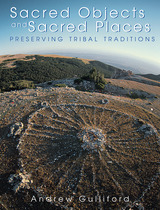
The author traveled thousands of miles over a ten-year period to meet and interview tribal elders, visit sacred places, and discuss the power of sacred objects in order to present the essential debates surrounding tribal historic preservation. Without revealing the exact locations of sacred places (unless tribes have gone public with their cultural concerns), Gulliford discusses the cultural significance of tribal sacred sites and the ways in which they are being preserved. Some of the case studies included are the Wyoming Medicine Wheel, Devil's Tower National Monument, Mount Shasta in California, Mount Graham in Arizona, and the Sweet Grass Hills in Montana. Federal laws are reviewed in the context of tribal preservation programs, and tribal elders discuss specific cases of repatriation.
Though the book describes numerous tribal tragedies and offers examples of cultural theft, Sacred Objects and Sacred Places affirms living traditions. It reveals how the resolution of these controversies in favor of native people will ensure their cultural continuity in a changing and increasingly complex world. The issues of returning human remains, curating sacred objects, and preserving tribal traditions are addressed to provide the reader with a full picture of Native Americans' struggles to keep their heritage alive.

In this poetry collection, JD Debris focuses on characters who live on society’s outskirts and demand greater visibility in the face of marginalization. At the book’s heart are extended narrative elegies for two musicians. First, the poet follows Mexican singer and songwriter Chalino Sánchez as he avenges his sister’s sexual assault, and then he turns to Gato Barbieri, an influential Argentine tenor saxophonist who is haunted by a shadowy “man in dusk-colored glasses.” As these musicians question their purpose, we as readers are invited to reflect on our lives, our legacies, and ourselves.
The Scorpion’s Question Mark is personal and mythological, representational and abstract. These formally inventive and metrically attuned poems compose a range of contrasts—boxers Manny Pacquiao and Marvelous Marvin Hagler appear alongside Tupac and Herman Melville, and apparitions of the Virgin Mary manifest in both human and mirage-like forms on public beachfronts. Looking to the scorpion’s tail that forms the shape of a question mark, Debris seeks to occupy uncertain space within the poems, bending forms to find both expansiveness and tension.
The Scorpion’s Question Mark was the winner of the 2022 Donald Justice Poetry Prize.

Selected Poems is compiled from the best works in Jean Garrigue's eight published collections. Garrigue (1914-72) is recognized as a leading American poet of the fifties and sixties. Among her awards and honors were a Guggenheim fellowship and a National Institute of Arts and Letters grant.
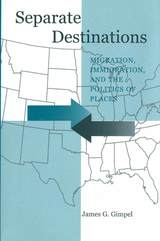
Newer immigrants are con-strained by a lack of education, money, English literacy, and information--and frequently by discrimination--to live in areas of coethnic settlement. Domestic, native-born migrants--predominantly Caucasian--free of discrimination and possessing more money and information, move where they wish, often to communities where immigrants are not welcome or cannot afford to live. Strong evidence suggests that spatially isolated immigrants are slower to naturalize and get involved in politics than domestic migrants.
Gimpel looks closely at states with very different patterns of migration and immigration: California, Colorado, Kansas, Kentucky, Florida, Pennsylvania, and New York. In these states, Gimpel shows the impact of population mobility on party registration, party votes, and voter turnout and asks whether population changes have changed the dominant party in a state or produced a political reaction from natives.
Separate Destinations contains a number of thematic maps detailing the settlement patterns of internal migrants and immigrants for both counties and census tracts. Blending insights from a number of social science disciplines, including economics, demography, sociology, political science, and anthropology, this book will be of interest to a wide and diverse readership of scholars, students, and policymakers.
James G. Gimpel is Associate Professor of Government, University of Maryland.
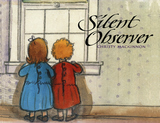
Silent Observer is an affectionate, poignant memoir of childhood as seen through the eyes of a vivacious young girl. Teachers, parents, and children will share in their enjoyment of this beautiful, sensitive story of a harder but wonderful time that has passed.
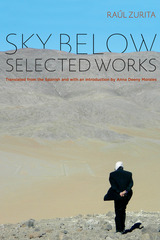
Chilean poet Raúl Zurita has long been recognized as one of the most celebrated and important voices from Latin America. His compelling rhythms combine epic and lyric tones, public and most intimate themes, grief and joy. This bilingual volume of selected works is the first of its kind in any language, representing the remarkable range of an extraordinary poet. Zurita’s work confronts the cataclysm of the Pinochet coup with a powerful urgency matched by remarkable craftsmanship and imaginative vision. In Zurita’s attempt to address the atrocities that indelibly mark Chile, he makes manifest the common history of the Americas.
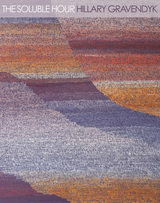
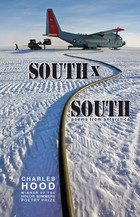
A vivid and insightful look at the culture and terrain of Antarctica, as well as the people who choose to live and work there, South × South celebrates and explores life at the extreme edge of our planet. Blending travel narrative, historical research, and the surprises of magical realism, Hood presents life in Antarctica and the history of polar aviation as both a miracle of achievement yet also as a way to understand humanity’s longing to be creatures of the heavens as well as the earth. South × South is poetry at its most inventive and surprising, insisting that the world is stranger and more glorious than we ever might have guessed.

What lies beneath the surface of Masters' timeless classic
One of the most striking and original achievements in American poetry is now available in a remarkable edition that comprehends the poet and his book in an entirely new way.
This edition of Spoon River Anthology probes the social background of the small-town world that Edgar Lee Masters loved and hated--and finally transmuted into powerful literary art. Extensive annotations identify the people whose lives inspired the 243 poetic accounts of frustration, violence, struggle, and triumph that shocked American readers.
The most extraordinary feature of this edition is the extensive introduction that provides the key to this misunderstood American classic. The book's relationship to Whitman is clearly established, and the important influences of Browning, Goethe, Spinoza, and others are revealed for the first time. John Hallwas' approach combines cultural, biographical, philosophical, psychoanalytic, mythic, and symbolic insights--and concludes with a stunning reassessment of "Our New Poet."
The annotated Spoon River Anthology supersedes seventy-five years of largely misdirected critical commentary. It will send a new generation of readers back to this surprisingly complex book that probes so deeply into the American consciousness.
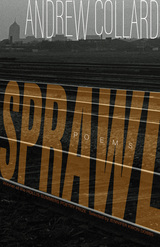

Frome's recent conversations with residents, new and old, along with a complement of historic and contemporary photographs, confirm the views stated in the book's original 1966 edition.
The author brings his knowledge, experience, and insights to bear on "one of God's special places." He suggests alternatives to commercial overdevelopment and the destruction of the Great Smokies' flora and fauna, citing recent cases such as the Tellico Dam project and the continuing pollution of the Pigeon River. Always emphasizing our inevitable relationship with our surroundings, Frome relates the story of the Great Smoky Mountains with respect and affection for the region, its people, and their history.
Michael Frome ranks among the foremost American authors on travel and conservation. His interests are closely associated with national parks, national forests, and natural beauty in the United States and other countries. He has been a columnist and correspondent for major newspapers and magazines and a university lecturer. He is author of Conscience of a Conservationist: Selected Essays.
READERS
Browse our collection.
PUBLISHERS
See BiblioVault's publisher services.
STUDENT SERVICES
Files for college accessibility offices.
UChicago Accessibility Resources
home | accessibility | search | about | contact us
BiblioVault ® 2001 - 2024
The University of Chicago Press









